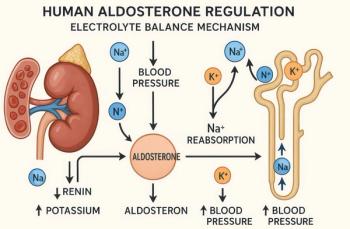
Paradigms Shift in Type 2 Diabetes Management
Anything less than comprehensive care for type 2 diabetes is quickly becoming old school.
Treating hypertension effectively has been the primary topic in this series.1 Hypertension in the context of Diabetes (T2DM) has received particular attention.1 Since 80-to 90% of persons with T2DM will also be hypertensive and since T2DM itself triples the risk of cardiovascular disease at any level of systolic blood pressure-it has been time well spent.2 These items taken together segue neatly into consideration of the emerging paradigm shift in treatment of T2DM. Focusing on one risk factor at a time (or essentially having tunnel vision) has to change. An upcoming Guideline from both the American Diabetes Association (ADA) and the European Association for the Study of Diabetes (EASD) approaches T2DM treatment in the context of >1 risk factor at a time.3
The Guideline proposes that after the diagnosis of T2DM, therapy should begin only after considering cardiovascular risk (CV risk). Then the choice of agent to treat T2DM would be determined contingent upon CV risk (more on defining risk below). Agents that have been proven to not only decrease A1C, but also to impact CV risk in evidence-based studies, should be initial choices to lower glucose in the high CV risk cohort. Two classes of therapeutic agents are reviewed in the context of DM 2 and significant CV risk: SGLT-2 and GLP-1 agents. An SGLT-2 and GLP-1 agent, empagaflozin and liraglutide respectively, have demonstrated improved cardiovascular outcomes (including stroke) when used to treat DM2.4,5
In the empagaflozin study,4 increased CV risk was defined as: a myocardial infarction within the preceding 2 months, multivessel coronary artery disease, history of coronary revascularization, a positive stress test, and peripheral vascular disease (PVD). In the liraglutide study,5 patients with at least one cardiovascular coexisting condition were enrolled (coronary heart disease, cerebrovascular disease, peripheral vascular disease, chronic kidney disease stage 3 or greater, or chronic heart failure or an age
of 60 years or more with at least one cardiovascular risk factor (microalbuminuria, proteinuria, hypertension and left ventricular hypertrophy, left ventricular systolic or diastolic dysfunction, or an ankle–brachial index of less than 0.9). Since the benefits in the 2 studies included both improved diabetic control and certain CV risk reductions, the Guideline suggests they should be prescribed first in high risk CV patients in an effort to simultaneously treat T2DM and decrease vascular risk.
T2DM’s new treatment paradigm is a multifaceted attack on all diabetic risk factors: A1C, blood pressure, and CV risk including statins to reach LDL targets. Remember that the empagaflozin trial specifically said all enrollees were comprehensively cared for (not only their diabetes, but also the other parameters).4 Anything less than comprehensive is quickly becoming old school.
1.) Are we in ACCORD as we SPRINT…your and my product
2.) Sarafidis PA., Lazaridis AA., Ruiz-Hurtado G., & Ruilope LM. Blood pressure reduction in diabetes: lessons from ACCORD, SPRINT, and EMPA-REG OUTCOME. Nature Reviews/Endocrinology 2017; 13:365-374.
3.) American Diabetes Association 2018 Scientific Sessions, 6-26-2018, Orlando, Florida.
4.) Zinman B, Wanner C, Lachin JM, Empagaflozin, cardiovascular outcomes, and mortality in type 2 diabetics. N Engl J Med. 2015; 373:2117-2128.
5.) Marso SP, Daniels, GH, Brown-Frandsen K. Liraglutide and Cardiovascular Outcomes in Type 2 Diabetes. N Engl J Med. 2016; 375: 311-322.
Newsletter
Enhance your clinical practice with the Patient Care newsletter, offering the latest evidence-based guidelines, diagnostic insights, and treatment strategies for primary care physicians.



















































































































































































































































































